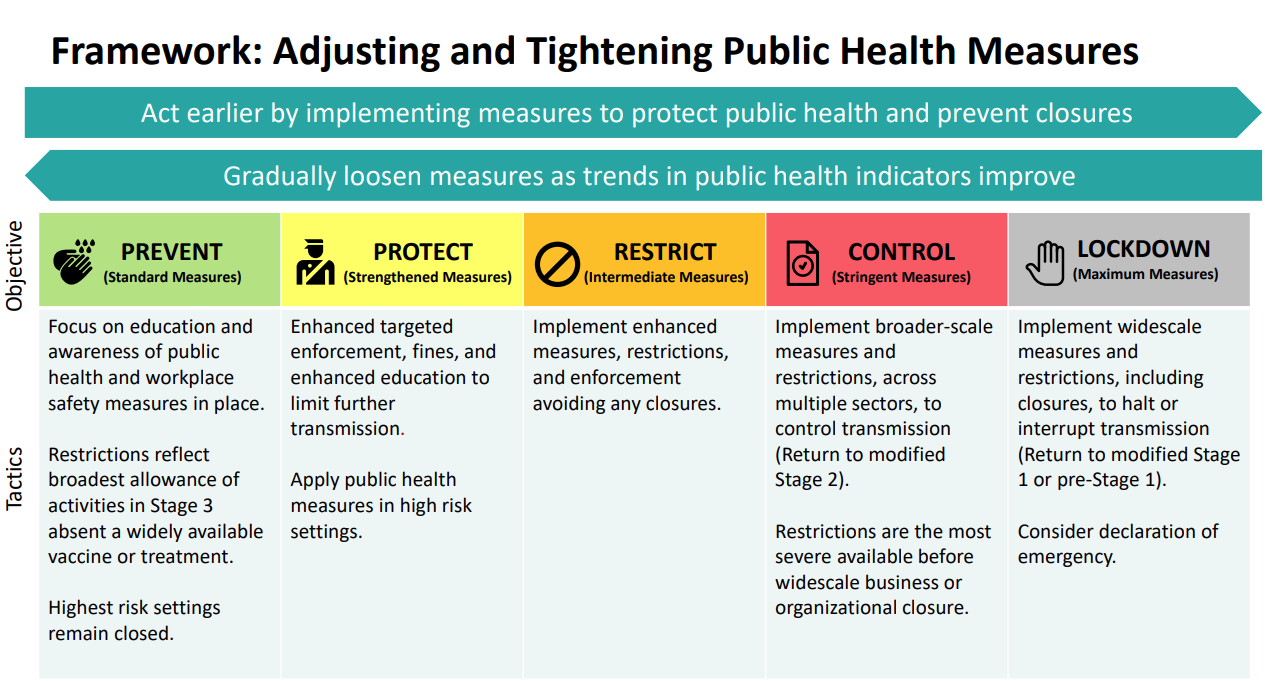WELLINGTON COUNTY — The Wellington-Dufferin-Guelph Public Health (WDGPH) region will move to the orange (restrict) COVID-19 alert level as part of province-wide changes in response to “alarming” case increases across Ontario.
Officials say lowering the thresholds for each level “will help limit the spread of COVID-19 while keeping schools open, maintaining health system capacity, protecting the most vulnerable and avoiding broader lockdowns.”
The new classifications, effective Nov. 16, are expected to be in effect for 28 days, though more stringent restrictions could be introduced within that time if deemed necessary by officials.
“Our number one priority right now is getting the numbers down and keeping people safe,” said Premier Doug Ford.
“We must do whatever it takes to stop our hospitals from being overwhelmed and protect our most vulnerable.”
The latest modelling shows that if the number of new cases continues to grow at its current rate, the province could register up to 6,500 new cases per day by mid-December.
Within the next two weeks the province will likely exceed its intensive care unit (ICU) threshold of 150 beds, likely forcing hospitals to cancel elective surgeries and other procedures.
While the Hamilton, Halton, Toronto and York regions will move into the red (control) level, WDGPH joins five others in the orange level.

The new colour-coded COVID-19 framework introduced by the province on Nov. 3 includes five levels:
Green (prevent), Yellow (protect), Orange (restrict), Red (control); and Grey (lockdown – a measure of last and urgent resort).
The levels are based on weekly incidence rates, positivity rate, effective reproductive number (Rt), outbreak trends and the level of community transmission.
The following restrictions – in addition to those currently in place – are in effect for level orange:
- restaurants must limit indoor capacity to 50, stop serving liquor by 9pm and close at 10pm, screen patrons, and limit seating groups to maximum of four people;
- gyms and sport/recreation facilities must limit capacity to 50 people per facility, screen patrons, and limit the duration of stays;
- retail stores must screen all patrons; and
- personal care services can not provide services requiring the removal of face coverings, must screen patients, and close change rooms, showers, hot tubs, etc.
A full list of the restriction is available on the government’s website.
In addition, visitor restrictions will also apply to long-term care homes in both the orange and red levels, as of Nov 16.
Only essential visitors, including up to one caregiver per resident, may visit.
Local public health units may provide further direction on the types and numbers of visitors to the homes.
“People planning a visit to a long-term care home are advised to contact the home in advance to make sure the home is free of outbreaks, and to get information on the home’s visitor policy and any other restrictions,” states the government website.
Public health officials are recommending all Ontarians continue to adhere to the following public health guidelines:
- avoid social gatherings and limit close contacts to your household or the people you live with;
- maintain two metres of physical distancing from everyone else;
- wear a face covering indoors and wear one outdoors if physical distancing may not be maintained or if wearing one is required;
- wash your hands thoroughly and regularly;
- stay home if you have COVID-19 symptoms, even if mild;
- “cover your cough”;
- get tested if you have symptoms compatible with COVID-19, or if you’ve been advised of exposure;
- people from higher transmission regions should avoid travel to lower transmission regions, except for essential reasons; and
- download the COVID Alert mobile app.




